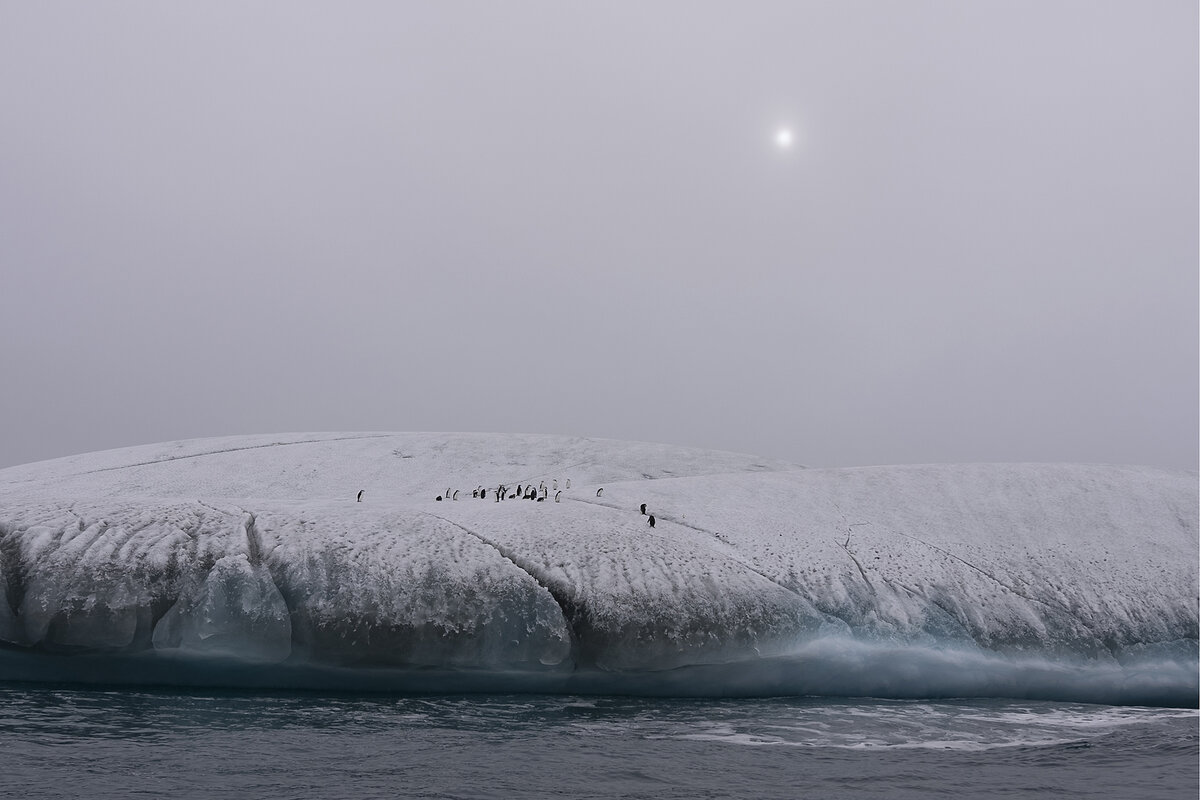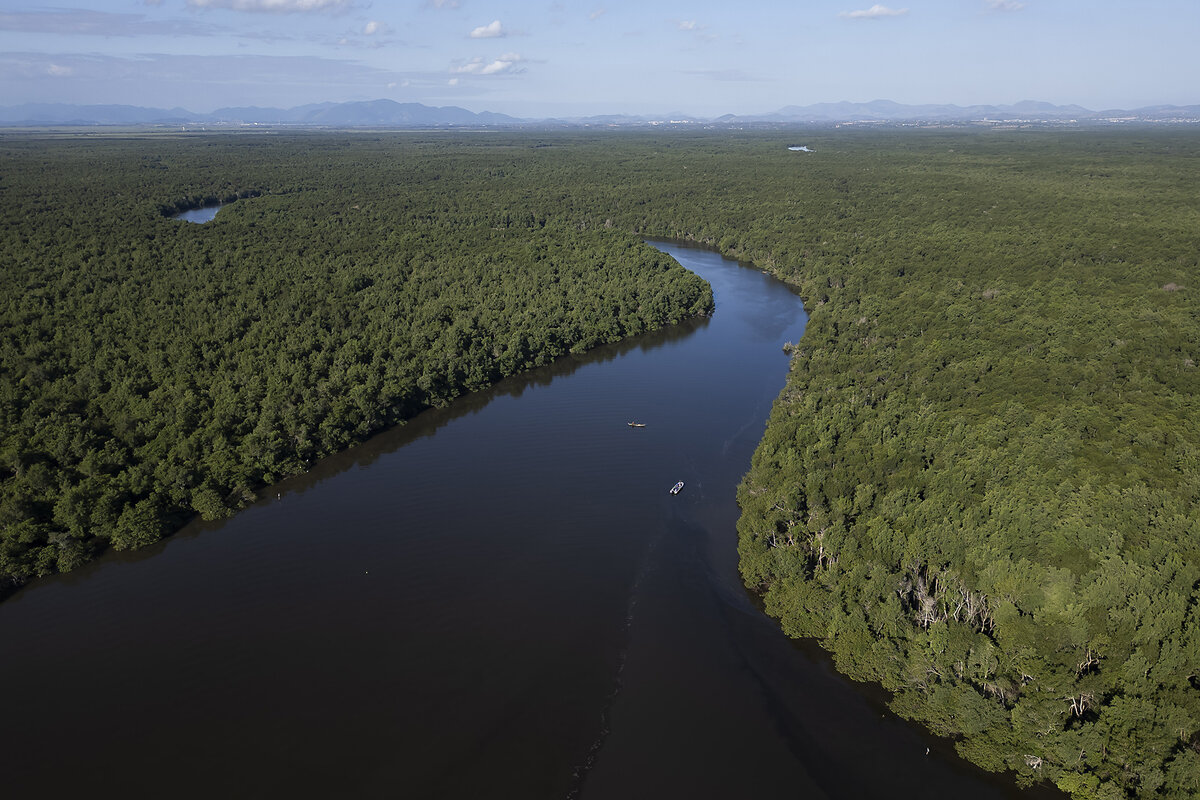How rising sea temperatures are affecting Earth’s climate
Loading...
Oceans are changing as global temperatures increase, a shift that could have huge consequences for everyone on Earth. But the story of this portion of the planet’s surface is also one of hope and potential, especially when it comes to climate change, according to scientists and environmental advocates.
These dual messages are the focus of this year’s World Oceans Day, an international holiday occurring every June 8. First suggested by the Canadian government in 1992, the day has evolved into a global effort to get land-focused humans to pay more attention to the water that covers 70% of our planet. This year the theme is “catalyzing action for our ocean and climate” – an effort to explicitly link the issues of ocean health and climate change.
“Most people see the ocean as that wet place they go in a boat,” says Tom Pickerell, a marine scientist who is the global director for the Ocean Program at the World Resources Institute. “But it’s key to our survival.”
Why We Wrote This
Oceans help keep temperatures on Earth balanced. They may also offer some natural solutions to climate change. Yet rising temperatures are affecting oceans’ ability to serve as a heat buffer.
Humans have explored only a tiny fraction of the ocean. A regular saying among marine scientists is that we know more about the moon than we do about our own watery ecosystem. But we do know some key facts: The ocean is central to Earth’s climate system. And it’s changing as humans alter the atmosphere.
How do the world’s oceans affect Earth’s climate?
The oceans are the planet’s temperature regulators. They not only absorb most of the heat that comes into our atmosphere from the sun, but also distribute that warmth around the globe through a system of conveyor belt-like currents. This keeps the equatorial regions of the world, which get a disproportionate amount of solar radiation, from being unbearably hot, and the northernmost and southernmost regions from being unbearably cold. (The United Kingdom, for instance, has a mild temperature despite its high latitude thanks, in large part, to the Gulf Stream.)
“Life on Earth exists because of the ocean,” says Lisa Suatoni, deputy director of the oceans divisions for the Natural Resources Defense Council. “It moderates our climate so that every point on Earth is habitable.”
Around half of the world’s oxygen comes from the ocean (thanks largely to photosynthesizing phytoplankton). About one-sixth of the animal protein that humans consume comes from ocean animals. And this might seem obvious, but the oceans give us ... water. Almost all of the world’s rain comes from evaporating ocean water. That atmospheric moisture gets carried around the globe by trade winds, forms rainstorms, falls on land, and supports the hydrological systems that in turn support us.
This complex, churning system is controlled by a slew of different factors: winds, salinity, the Earth’s rotation, the gravitational pull of the moon – and, of course, temperature.
What’s climate change doing to the oceans?
There’s a lot of talk about how Earth is getting hotter, and how that’s resulting in heat waves such as the one that sent temperatures in India and Pakistan last week soaring above 120 degrees Fahrenheit. But the ocean is actually absorbing most of the extra heat caused by human activity – as much as 90%, says Dr. Pickerell.
“Without that buffer, we’d be in a much warmer place,” he says.
Last year was the ocean’s warmest year in recorded history, according to NASA. The past 10 years were the warmest decade since at least the 1800s. That heat makes an impact. On a basic physics level, warmer water expands more than colder water, which in the oceans means sea level rise. Warmer water also melts ice. Think about what happens to your ice cubes in a glass of lukewarm water left outside in the summer. Although more complex, on some level that’s what’s happening to sea ice at the poles.
That melting ice means even more sea level rise for island and coastal communities. But warmer water and melting ice also affects those finely tuned currents that distribute heat around the world.
While scientists have conflicting views about how fast, and even whether, currents such as the cold Labrador Current or the warm North Atlantic Drift will break down, the risk of them doing so is high enough that many researchers are alarmed. (In some scenarios, researchers have predicted extreme storms and frigid weather in the U.K. to accompany a weakening of the Gulf Stream.)
It’s not only humans who are affected. Marine species are already migrating rapidly because of changing ocean temperatures.
“We’re just seeing really rapid changes in marine ecosystems because of that heat,” says Dr. Suatoni. “Marine animals are cold-blooded. They respond more rapidly than other animals. Fish are racing to the poles.”
But heat isn’t the only thing going into oceans. Scientists estimate that oceans have absorbed around 30% of the carbon dioxide emitted by humans. This is having a chemical effect in the water, making the oceans more acidic. (The oceans are more acidic now than they have been at any point in the past 2 million years, according to the U.S. Environmental Protection Agency.)
While humans putting their hands in the water might not notice the shift, the increased acidity is having a big impact on marine life, particularly on the bottom of the food chain. Larvae, for instance, are particularly sensitive to acidity; creatures also have a harder time forming shells.
Are there ocean-based solutions to climate change?
But even as oceans bear the brunt of climate change, Dr. Pickerell points out, they also offer some of the world’s most hopeful solutions. The world could dramatically lower its net emissions by using ocean-based technology it already has, according to a report by The Ocean Panel, an international group of world leaders focused on ocean health. That includes restoring and supporting ocean ecosystems such as mangroves, which capture large amounts of carbon dioxide.
“If we just conserved and restored degraded blue carbon ecosystems – mangrove, seagrasses, sea meadows, and so on, we could reduce emissions by 2.8 gigatons of carbon. That’s like retiring 76 coal-fired power plants each year,” Dr. Pickerell says.
Ocean-based climate solutions could also involve decarbonizing ocean transport, better managing fisheries, and eliminating food waste. Researchers are looking at other higher-tech solutions, as well. Scientists and entrepreneurs have tested carbon-capture methods that range from burying seaweed to “storing” ocean CO2 by using chemical reactions and capsules. Off-shore wind farms could help supply clean energy, some researchers say.
But while there may be potential in these initiatives, some scientists also caution against what they see as a growing industrialization of the ocean. It’s important to make sure that by seeking solutions to the challenge of climate change, we don’t inadvertently make the overall situation for ocean health worse.
In fact, some researchers also see potential in the ocean for safe havens.
Efforts are growing to develop marine protected areas in both national and international waters.
“Climate change is obviously going to profoundly change our marine ecosystems,” says Dr. Suatoni. “But we’d like to give them the chance to adapt to these changes.”









